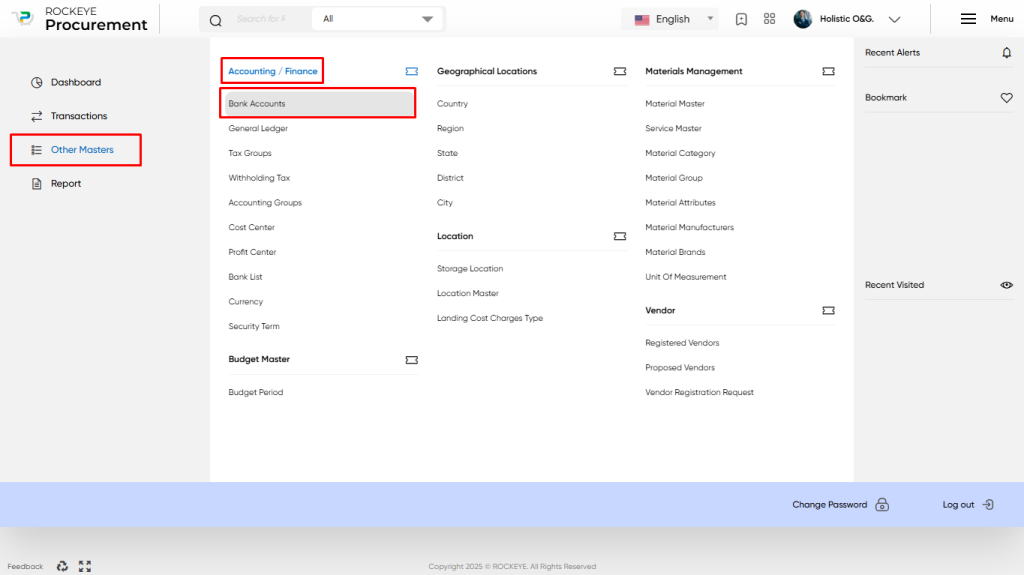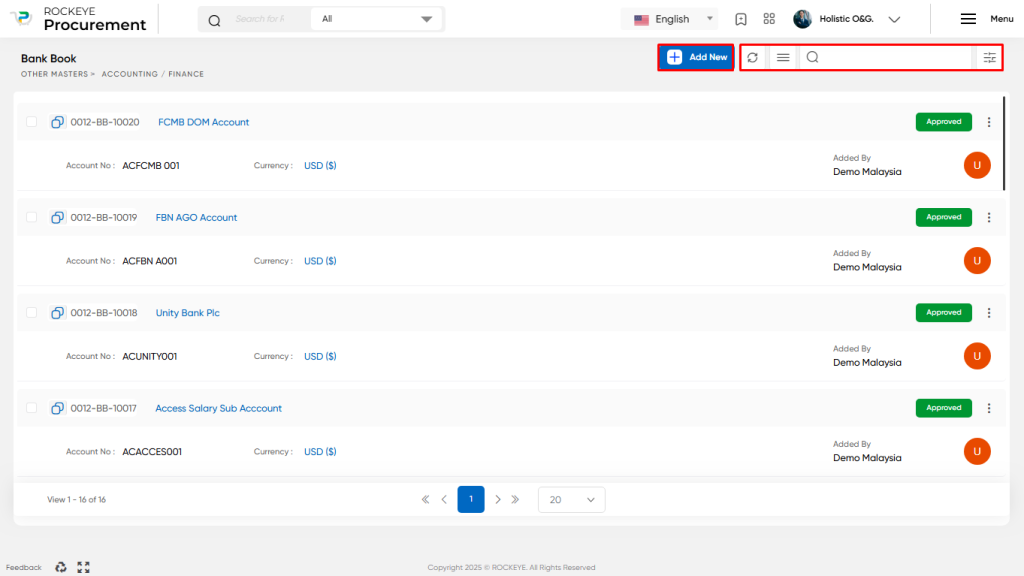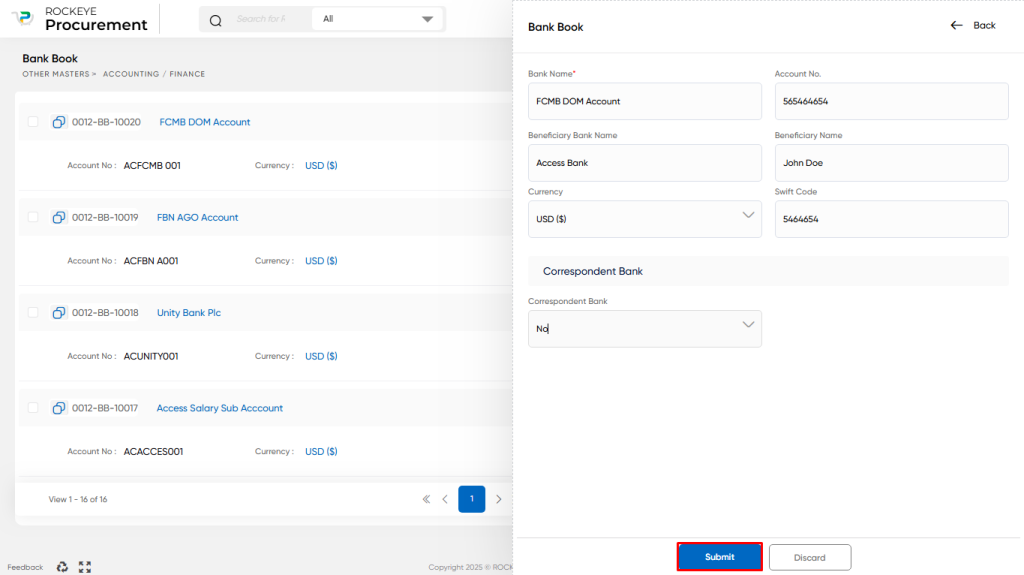Bank Account
Introduction/Purpose:
The Bank Account Master plays a crucial role within the procurement system, particularly in financial management and payment processes. It enables efficient handling of financial transactions, including vendor payments, expense reimbursements, and invoice settlements. By ensuring accurate and up-to-date bank account information, the Bank Book Master facilitates smooth and precise processing of financial transactions within the procurement system.
In a procurement system, the Bank Book Master serves as a centralised repository or database containing comprehensive information about various bank accounts associated with an organisation. It includes details such as account numbers, bank names, and relevant currency information.
If integrated with the FINAS system, the Bank Book Master can synchronise data between the two systems. Procurement users have the ability to create and manage the bank book, and it is also utilised in setting preferences within the vendor/supplier master, such as selecting the preferred bank for making payments. Furthermore, the bank account information is used in various transactional activities, particularly during the payment process.
Dependency:
The creation of a bank account in a procurement system depends on several factors:
- Integration with Financial Systems: The procurement system may need to integrate with the organisation’s financial systems, such as accounting software or enterprise resource planning (ERP) systems. This integration ensures that the bank account is updated with relevant financial data and transactions.
Overall, the dependency to create a bank account in a procurement system lies in establishing bank accounts, obtaining proper authorisations, accessing banking information, integrating with financial systems, managing data entry, and adhering to internal controls and governance procedures.
How to Navigate:
The navigation to record a bank account in a procurement system typically involves the following steps:
- Click on the main navigation icon: The main navigation icon may be located in the top right corner of the screen. Clicking on this icon will open the navigation menu, which typically includes links to various sections of the procurement system.
- Click on the Other Master section: The Other Masters section is located under the left section of the screen; clicking on this section will display a list of masters related to procuring.
- Find the Accounts/Finance section: The Accounts/Finance section is located in the list of Master under the Master section. Clicking on this section will display a list of Master related to accounts/finance.
- Click on the Bank Book link: The Bank Book link is located under the Accounts/Finance section, after clicking on this link, you can navigate to Bank Book in the listing, and from that you can easily upload new transactions into the system.

Listing:
In a procurement system, the bank account listing provides a comprehensive view of the bank accounts associated with the organisation. It includes relevant information about each bank account, allowing for easy reference and management. Here is a breakdown of the bank book listing in a procurement system:

- Refresh: This option allows users to update the Bank Book listing to ensure the latest information is displayed.
- Extra Activity: This section provides additional functionalities related to the Bank Book. Users can search for specific bank accounts, export the Bank Book data for external use, and sync the Bank Book with other systems to ensure data consistency.
- Other Options: One of the options available is an activity log, which tracks any changes or activities related to a particular bank account, providing an audit trail for accountability and transparency.
- Card View: The Bank Book listing is typically presented in a card view format, with each bank account represented as a separate card. The card view displays key information such as the bank code, bank account name, account number, currency, the user who added the account, and the approval status of the account.
The Bank Book listing in the procurement system serves as a centralised hub for managing and accessing crucial bank account information. It allows users to quickly view, search, and export bank account details while providing transparency through activity logs and approval status. This facilitates efficient financial management and decision-making within the procurement process.
Recording & Update:
The bank account in a procurement system can be created through two methods: manual entry or syncing with the Financial Accounting System (FINAS). If synced with FINAS, records cannot be edited in the procurement system. Manual creation allows for updating Bank Book records. Approval Flow may be enabled for recording and updates.

For manual creation, the following fields are required:
- Bank Account Name: The name of the bank associated with the type of account.
- Account Number: The unique account number assigned to the bank account.
- Currency: The currency in which the bank account operates.
The Bank Book recording and update process maintains accurate and up-to-date bank account information in the procurement system, enabling efficient financial management and integration with other systems. Implementing Approval Flow and Sync Bank Book enables organizations to establish controls and streamline bank account management, ensuring accuracy, compliance, and efficiency.
The user can perform the following actions in this section:
- Submit: This option allows the user to publish the transaction information. If the system has an approval flow, the maker will submit the information, and it will be sent to the approval authority or checker for approval.
- Discard: This option allows the user to discard the transaction before saving it.
Key Notes Bank Book:
- Bank accounts are usually synced with the FINAS system if integrated, accomplished by selecting “Sync Bank List” from the Bank Book listing.